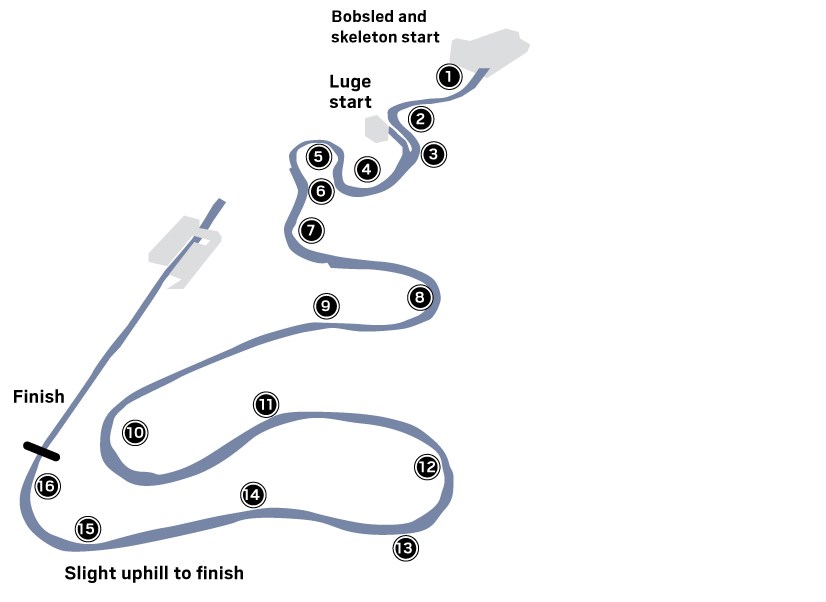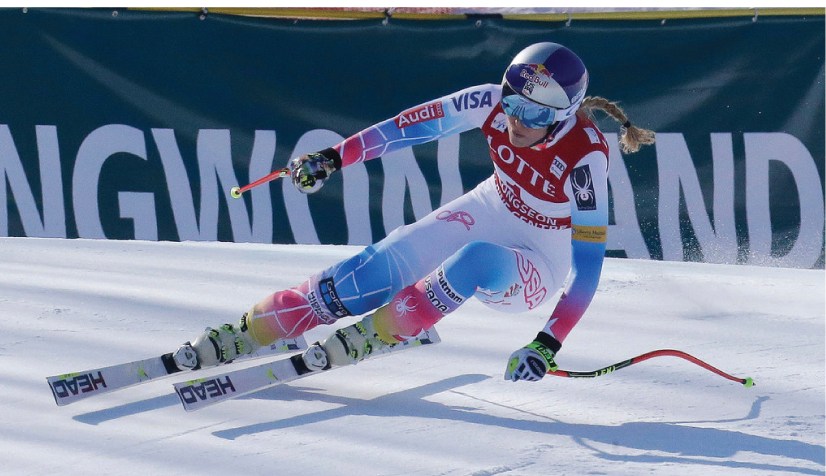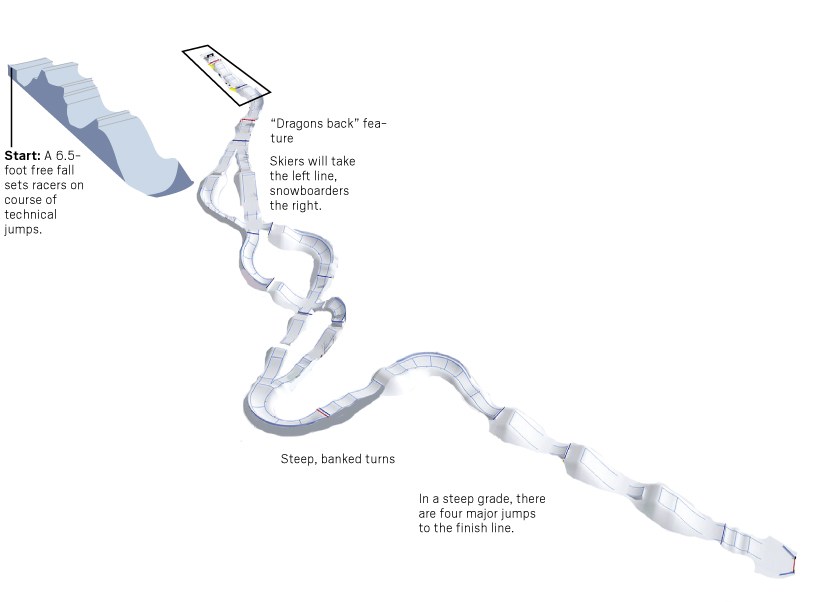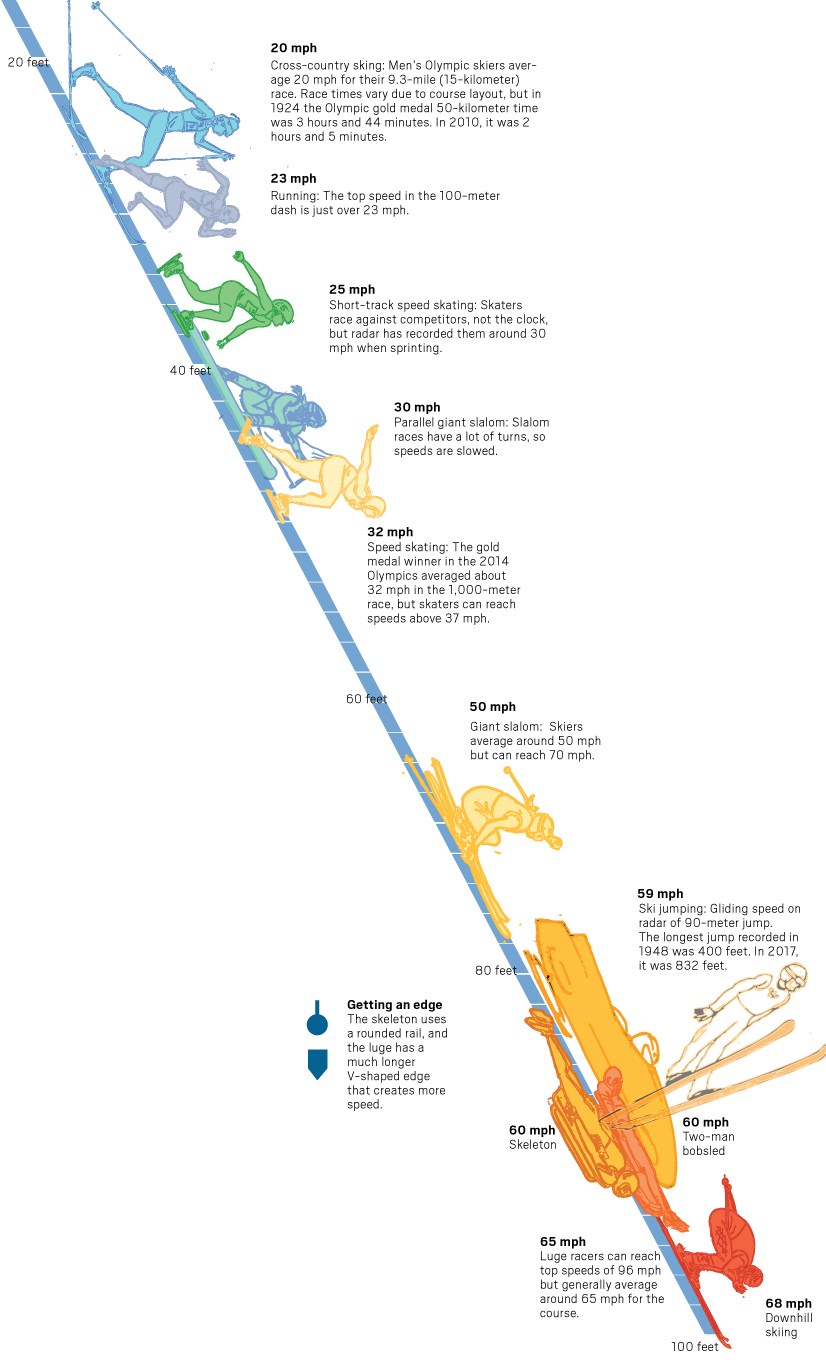In the most recent third-quarter filings from US apparel and footwear brands and retailers, footwear and accessories specialist Steve Madden booked an 8.3% rise in net sales compared to the year-ago period, while Levi Strauss & Co enjoyed a double-digit hike in both net income and net revenue during the fourth quarter.
UK department store retailer Debenhams has announced it may axe up to one-quarter of its store manager roles as part of its turnaround strategy.
-
![Most Rev. Thanh Thai Nguyen, the auxiliary bishop of the Diocese of Orange, at Christ Cathedral in Garden Grove on Friday, Jan 19, 2018. Nguyen is the second Vietnamese American bishop to serve in that capacity and was recently ordained. (Photo by Jeff Gritchen, Orange County Register/SCNG)]()
Most Rev. Thanh Thai Nguyen, the auxiliary bishop of the Diocese of Orange, at Christ Cathedral in Garden Grove on Friday, Jan 19, 2018. Nguyen is the second Vietnamese American bishop to serve in that capacity and was recently ordained. (Photo by Jeff Gritchen, Orange County Register/SCNG)
-
![Most Rev. Thanh Thai Nguyen, the auxiliary bishop of the Diocese of Orange, at Christ Cathedral in Garden Grove on Friday, Jan 19, 2018. Nguyen is the second Vietnamese American bishop to serve in that capacity and was recently ordained. (Photo by Jeff Gritchen, Orange County Register/SCNG)]()
Most Rev. Thanh Thai Nguyen, the auxiliary bishop of the Diocese of Orange, at Christ Cathedral in Garden Grove on Friday, Jan 19, 2018. Nguyen is the second Vietnamese American bishop to serve in that capacity and was recently ordained. (Photo by Jeff Gritchen, Orange County Register/SCNG)
-
![Most Rev. Thanh Thai Nguyen, the auxiliary bishop of the Diocese of Orange, at Christ Cathedral in Garden Grove on Friday, Jan 19, 2018. Nguyen is the second Vietnamese American bishop to serve in that capacity and was recently ordained. (Photo by Jeff Gritchen, Orange County Register/SCNG)]()
Most Rev. Thanh Thai Nguyen, the auxiliary bishop of the Diocese of Orange, at Christ Cathedral in Garden Grove on Friday, Jan 19, 2018. Nguyen is the second Vietnamese American bishop to serve in that capacity and was recently ordained. (Photo by Jeff Gritchen, Orange County Register/SCNG)
-
![Most Rev. Thanh Thai Nguyen, the auxiliary bishop of the Diocese of Orange, at Christ Cathedral in Garden Grove on Friday, Jan 19, 2018. Nguyen is the second Vietnamese American bishop to serve in that capacity and was recently ordained. (Photo by Jeff Gritchen, Orange County Register/SCNG)]()
Most Rev. Thanh Thai Nguyen, the auxiliary bishop of the Diocese of Orange, at Christ Cathedral in Garden Grove on Friday, Jan 19, 2018. Nguyen is the second Vietnamese American bishop to serve in that capacity and was recently ordained. (Photo by Jeff Gritchen, Orange County Register/SCNG)
-
![Most Rev. Thanh Thai Nguyen, the auxiliary bishop of the Diocese of Orange, at Christ Cathedral in Garden Grove on Friday, Jan 19, 2018. Nguyen is the second Vietnamese American bishop to serve in that capacity and was recently ordained. (Photo by Jeff Gritchen, Orange County Register/SCNG)]()
Most Rev. Thanh Thai Nguyen, the auxiliary bishop of the Diocese of Orange, at Christ Cathedral in Garden Grove on Friday, Jan 19, 2018. Nguyen is the second Vietnamese American bishop to serve in that capacity and was recently ordained. (Photo by Jeff Gritchen, Orange County Register/SCNG)
-
Expand
The Most Rev. Thanh Thai Nguyen, Auxiliary Bishop at the Diocese of Orange
City of residence: Laguna Woods
Age: 64
Life Story: Nguyen was born in Nha Trang, Vietnam, and spent most of his elementary education in Catholic schools. In 1966, he entered St. Joseph Seminary, a small diocesan institute in Vietnam. His seminary education was interrupted by the communist government takeover of South Vietnam on April 30, 1975. He and other seminarians found themselves forced into hard labor in the rice fields just to be able to continue their studies. In 1979, Nguyen, along with 26 members of his extended family, boarded a 28-foot motorboat that left Cam Ranh Bay for the Philippines. The group spent 18 harrowing days at sea –several of them with no food or water — and were ambushed by a tropical storm. They prayed the rosary until they finally reached the shores of the Philippines. After spending 10 months there in a refugee camp, Nguyen and his family came to Beaumont, Texas, in June 1980. He continued his education, graduated from the Weston Jesuit School of Theology in Cambridge, Mass., and was ordained in 1991. Nguyen was appointed by Pope Francis as auxiliary bishop of Orange in October and was ordained in December. He came to Orange County from St. Joseph’s Catholic Church in Jacksonville, Fla.
Zodiac: 1953, Year of the Snake
Lucky number: “I like the numbers 8.3.1979, the day I arrived in the Philippines after 18 days at sea. It was like a second birth.”
New Year’s memories: In his church in Florida, Nguyen said, he would hold a special Lunar New Year Mass after which they would watch dragon dancers and enjoy fireworks. “We would then head to the social hall to wish one another (a happy New Year) and enjoy food and pick a Biblical phrase that would serve as a theme for the new year,” Nguyen said.
Charities: His heart is in youth ministries and in social justice causes such as helping the poor and the refugees, Nguyen said.
Mentors: “I look up to the two popes — Pope John Paul II and Pope Francis.” He admires Pope John Paul II for his courage to stand up to the communists in Poland and Pope Francis for reaching out to the poor. He’s met both of them.
Favorite music: This bishop is not afraid to break into song. His favorites include “Amazing Grace” and “Center of My Life,” a Catholic hymn.
Favorite food: He loves a good filet mignon and a glass of wine. “But I love and value the company of good people more than the food.”
Motto: “He leads me.” (Psalm 23) “I look at my life and God leads me. He led me from Vietnam to the Philippines and then to the United States. Inch by inch, God nudges me forward.”
The Olympic motto is ‘Citius, altius, fortius,’ Latin for ‘Faster, higher, stronger,’ but these Games might be slightly slower than others in several ways. Here’s a look at why.
Slip sliding away
Pyeongchang, South Korea’s Alpensia Sliding Center is the 20th sliding track in the world and the second in Asia. Its length is 6,092 feet, longer than the 5,951-foot track at the Sochi Olympics and the 5,577-foot track at the Vancouver Olympics. The track also features 16 curves, one fewer than on the Sochi track.
Experts rating the track say it might not be the longest, or fastest, but it is extremely challenging.
From Turn 1 to Turn 5, it’s about a five-story drop.
In the first 800 feet, sleds can reach 60 mph.

Here’s a preview of the track being tested by a luge racer.
Slower downhill skiing
The Jeongseon Alpine Center in South Korea hosted a men’s test race in 2017. The racers said the course was fun but slow, with the peak speed around 70 mph. At the Sochi Games, the top speed was about 84 mph. In the 2010 Games, one downhill skier reached a top speed of about 100 mph.
 Above photo: United States’ Lindsey Vonn competes during the women’s World Cup downhill at the Jeongseon Alpine Center in Jeongseon, South Korea in March 2017.
Above photo: United States’ Lindsey Vonn competes during the women’s World Cup downhill at the Jeongseon Alpine Center in Jeongseon, South Korea in March 2017.
Skating under pressure
Will the ice be fast in South Korea? Yes, and no. The speed skating venue has very low altitude and greater air pressure. That’s not a great formula for the fastest ice in the world.
South Korea has some of the fastest speed skaters in the world and the home crowd might inspire them to even skate faster.
Men’s 1,000-meter gold-medal times over the years:
 Thrills and spills
Thrills and spills
“Faster, higher, stronger” might be the motto of the Games, but the Winter Olympics have also gotten, more jumpy, bumpy and swervy. Ski and snowboard cross became an Olympic sport in 2010.
The snowboard and ski cross venue in South Korea is 3,444 feet long and has an average slope of 12 percent, greater than the bobsled track’s average of 9.8 percent.
Four athletes will race through the venue with multiple jumps and intersections. Snowboarders and skiers use separate parts of the course to challenge their skills before finishing on the same track.

Here’s a 3D model of the venue.
In one second
In the 2014 Olympics, the men’s downhill skiers averaged about 68 mph. At that speed, the skier would travel just under 100 feet per second.
The chart below compares how far other events would go in the same span of time at their average speeds.

Sources: International Olympic Committee, Olympic.org, Powder magazine, Pyeongchang2018, International Ski Federation, NBC Sports Photos: The Associated Press
Photos by: The Associated Press
What a week it was for all of the Orange County high school athletes who signed letters of intent Wednesday, the first day of the regular signing period for football, soccer and men’s water polo.
It was an especially gratifying week for Santa Margarita senior water polo goaltender Noah Hodge.
On Monday, Hodge was Santa Margarita’s choice to represent the school at the Orange County Athletic Director’s “Athletes of Character” dinner at Anaheim Convention Center. Santa Margarita’s female honoree at the event was his girlfriend Sarah Ciszek, an All-Orange County volleyball player. Hodge and Ciszek accepted their awards together.
On Wednesday, Hodge signed his letter of intent. He is going to Harvard where he plans to major in chemistry or bio-technical engineering. Hodge has a 4.86 grade-point average.
Hodge is a three-time All-Trinity League water polo player. He has been selected to the All-Orange County second team twice and has twice received All-CIF recognition. Hodge was Santa Margarita team captain his junior and senior seasons.
And he plays in the school’s orchestra and has completed 220 hours of community service.
It was a rewarding week.

CERRITOS — Authorities today sought public help to solve last summer’s killing of a Cerritos man known in the community for his efforts to help the homeless.
Gustavo Arteaga, 37, was fatally shot July 28, 2017, at the San Gabriel Riverbed and Artesia Boulevard.
“Arteaga was a compassionate neighbor who … enjoyed preparing food and offering a shower for the homeless community,” sheriff’s officials said. “During a charitable act, Gustavo was shot several times.”
At a news conference Thursday morning, detectives displayed composite drawings of three men seen fleeing the crime scene, one of whom was believed to have been the gunman.
“My kids are without a father now,” Arteaga’s wife, Priscilla, said. “He will never see them graduate.”
Arteaga is survived by four children.
Sheriff’s officials say Arteaga confronted the three suspects, who were apparently going toward a homeless encampment to see a person with whom they were involved in some type of dispute.
Anyone with information on the case was urged to call the Sheriff’s Homicide Bureau at (323) 890-5500.
In surfing there has always been a sort of discussion, if you will, about the issue of surfing “the sport” versus surfing “the art form.” These might not be the perfect terms to describe it, but will work OK for this little rambling of mine.
What made me think of this was last night I was sitting with my guests, who are here this week at my surf retreat on Mainland Mexico, watching a movie one of them had made about surfing on Long Island in New York. The surfing was very good by the way. I was watching ride after ride where the surfers were popping big aerial moves of some kind or another and I started to notice the difference in the ones that actually made some sort of sense in the overall riding of the wave and those that were just for the sake of doing it.
Later on, when thinking about it, it brought back a ton of memories from my beginnings in surfing and this very same subject.
OK, flashback to my early days entering surfing contests — this would have been late-1950s and early-1960s. Most of the contests were held in beachbreaks and most of the time the surf was small and would be blown out by the time the finals came around on Sunday afternoon. All the contests were held on weekends back then.
They would send you out for maybe a 15-minute heat with six surfers in it and would score you on your best five rides. Now do the math on this, just getting five rides in 15 minutes with five other guys in the water was hard enough. But then you were faced with trying to score as many points as you could on some sloppy little wave that maybe only lasted 10 seconds at best.
I remember that my thinking was that I needed to cram as much crap as I could into each and every wave to try and get points. It was like there was a meter running and each little move would add a ding ding ding or two to the tally.
I would do anything I could think of to get one more point. This would include spinners, fin first take-offs and one time when a wave closed out and I was stuck in the whitewater I even turned around and laid down on my board backward and stuck one leg into the air. It was so completely ridiculous that the crowd roared and I know it got me at least another point on that wave. I called it a “reverse bird.” Sometimes it only took one more point to win the heat and move on.
It was stuff like that which flamed the controversy between surfing as a competitive sport and surfing as a flowing art form. And I could totally see both sides of the coin. I normally didn’t do that kind of stuff when I was just free surfing, but in contests the whole point was getting points and sometimes — no, almost all the time, really — you needed to go beyond normal surfing and add some sort of something to stand out from the rest.
And this brought up the “what is functional and what is just show” discussion, which is kind of the same as sport versus art.
This brings me back to where I started in this. Watching the guys in the movie getting air. When surfers were first really exploring this I used to go down to the San Clemente Pier and watch Christian Fletcher, Matt Archibald, Dino Andino and the boys of the “San Clemente Air Corps” flying off lip after lip. It was what I had dreamed and fantasized about doing my whole surfing life.
The equipment of my era wasn’t made for that, but it eventually was and guys took to it rapidly. Today, it has become part of everyday surfing and just about anybody with any degree of skill is launching themselves regularly. And the question is back: How much of this stuff is functional and how much is just for show?
From what I see, some of these moves flow right into the context of the particular ride and make sense, while a lot of the time riders are doing it just to do it. A purist would frown on this. But I am thinking, what the heck. The whole point, at least in my mind, is to have fun. And this sure looks like a ton of fun.
In competition I am assuming they score more on function, but then I do not pretend to understand today’s judging system as most of the time I disagree with the results. This is what makes surfing subjective as opposed to objective.
Ask the expert
Q. I had a bad collision with the beach yesterday and broke the center fin off my board and ripped the entire fin box completely out of the board. Plus broke one of the side fins and box out too. The entire bottom of the tail of my board is just one big crater hole. My question is, do you think this is worth repairing, if it even is reparable? I am guessing it is going to cost me an arm and a leg plus will add a tremendous amount of weight to the tail of my board. It is an epoxy board made of Styrofoam. Should I just chuck it and get a new one or go for the repair?
Bruce Beatty
Dana Point
A. A really good repair guy can fix that without adding too much weight to your board, but there will be a little addition. The key thing here is the term “really good repair guy.” If this is not done exactly correctly it could affect your board very negatively. The boxes have to be reset EXACTLY perfectly. This is NOT a do it yourself repair or even one for the average repair guy. Only take it to one of the most respected in your area, or even travel a little to get it to the right guy. If you don’t know who that is, then call around to some of the surf shops and find out. I am guessing that a repair like that is going to cost you between $100 and $200 depending on just how gnarly the hole in your board is. I would think you would want to go for the repair before investing in a new board. If you are not satisfied with the result then you can get a new one and still be able to sell the old one as it will still have some value. Good luck.
Nicole and Michael Colovos made the leap to the runway for spring after a few seasons showing their collection of luxurious urban minimalism via showroom appointment. Seeing their fall collection, newly tricked up and cruelty-free — they stopped using leather, fur and animal skins — did nothing for the cause of keeping runway shows relevant. (Nor did Spring Studios, ground-zero this season for IMG’s fresh hell of an over-branded, over-staffed obstacle course.)
Whereas the Colovos’ early collections felt like quiet, cool discoveries, the fall lineup was amplified for the stage with orange quilted pants, faux fur and leather, and tailoring done with excessive exposed seams that didn’t thrive under the glare of the klieg lights. Pushing creativity is important for young brands, but so is finding the right environment in which to present.
Follow WWD on Twitter or become a fan on Facebook.Read More…
Trends and merchandising are definitely not given great consideration at Haus Alkire.
Uniqueness and beauty definitely play a much more relevant role for designers Julie and Jason Alkire, who presented a pretty fall collection at the chic Roll & Hill showroom on Mercer Street.
This season, the duo was influenced by Carl Ethan Akeley, the father of modern taxidermy, who was also a skilled sculptor and photographer, and whose works are on display in prestigious museums including Manhattan’s American Museum of Natural History.
Akeley’s works not only influenced the charming prints of wild animals, hand-sketched by Jason Alkire, which popped up on a fluid hot pink blouse matched with a shiny leather skirt, but also informed the sculptural approach of the collection.
Meticulous draping, cuts and stitching injected an unexpected, 3-D twist to the clothes, which ranged from a covetable washed and textured silk dress splashed with a print of a wintery nature scene to a plissé raw cut top with a frilled collar layered under a chic, relaxed pinstriped suit.
The great research on fabrics, such as the metallic ribbed silk crafted for an elegant revisit of a pajama set, and the edgy yet effortless silhouettes gave this collection an outstanding X factor.
Follow WWD on Twitter or become a fan on Facebook.Read More…
Foo and Foo, a riff off of designer Elizabeth Hilfiger’s nickname “Foo Foo” (of Little Bunny Foo Foo), isn’t just another streetwear brand. Since launching with buy-now-wear-now T-shirts a year ago, Hilfiger has expanded her line into a full collection of casualwear with intricate and unique details.
Hilfiger emphasized the importance of collaboration and having the clothes be something more for the wearer, stating it’s also “Foo & You.” For instance, mechanical hoodies with pull ties that can be wrapped many ways, whose mechanism is based on a physics formula that a friend illustrated and calculated as cloth colliding with fabric. The hoodies even come with safety manuals. “I nerded out, I got really into Newton’s law,” she stated. Hence a T with a picture of Disneyland, a childhood reference, with bold “Newton’s Law of Foo” text or graphics of signs and co-signs printed on tops. Pierced t-shirts, a logo beret and hoodies with two front pockets, the additional across the breast, also made for fun additions to the playful lineup. Logos were abundant, on trousers or a sweatshirt with a skinny, horizontal logo that paid homage to one of her father, Tommy Hilfiger’s, earlier Tommy Jeans designs. For her first
Follow WWD on Twitter or become a fan on Facebook.Read More…




